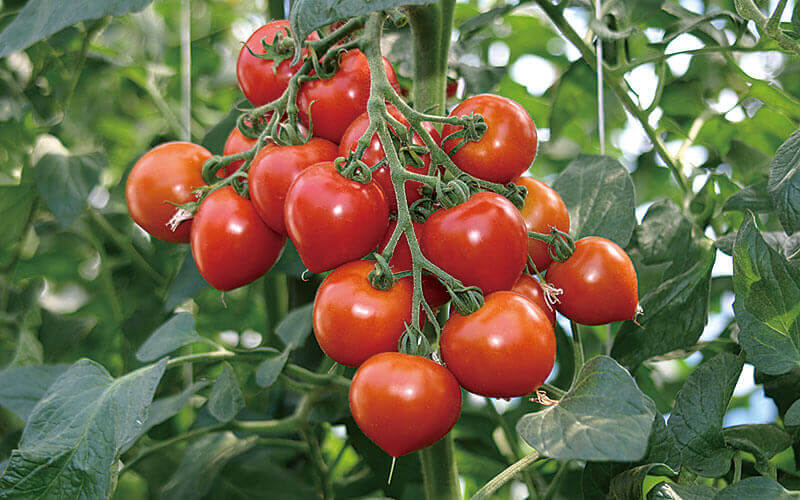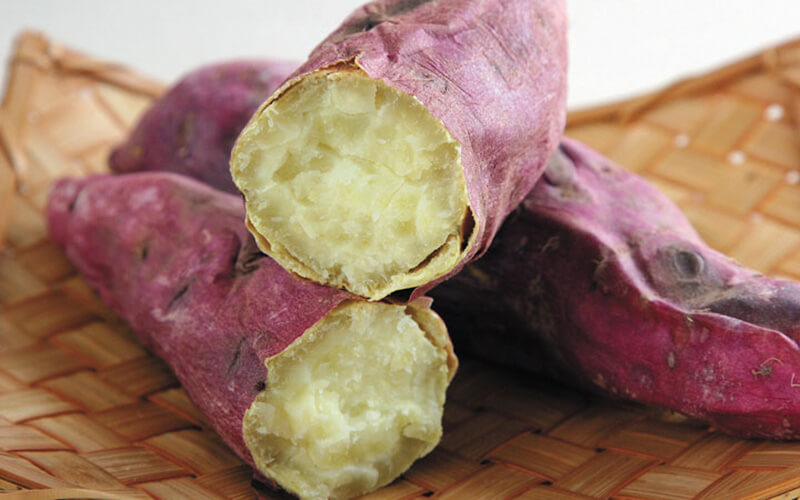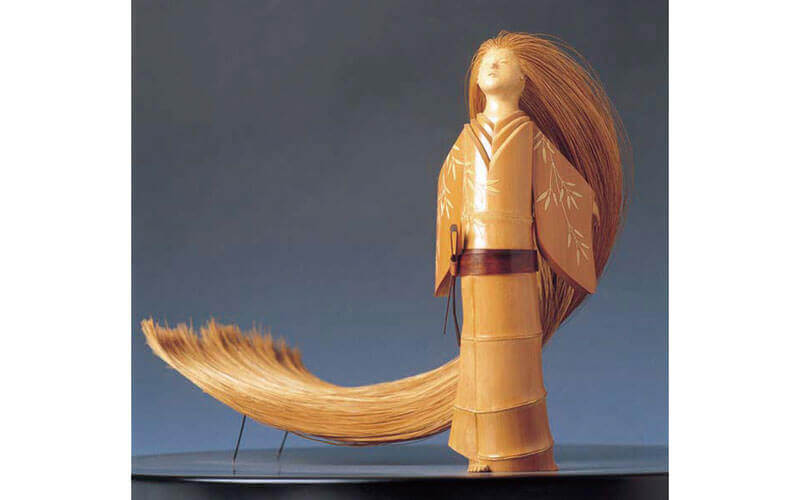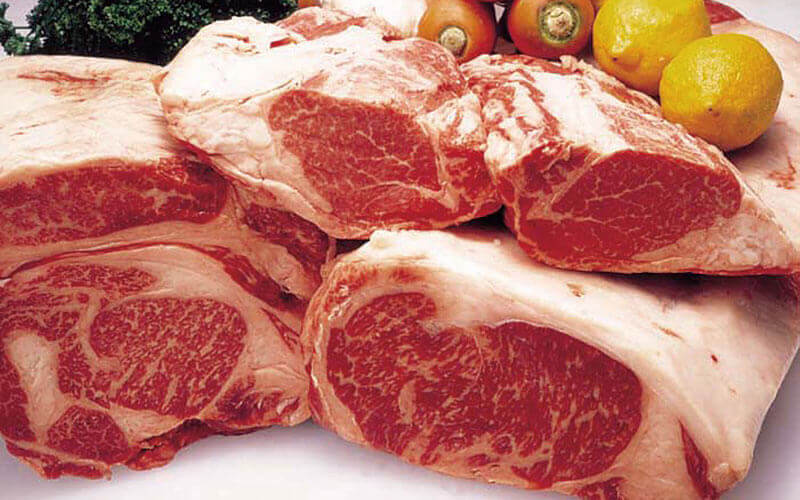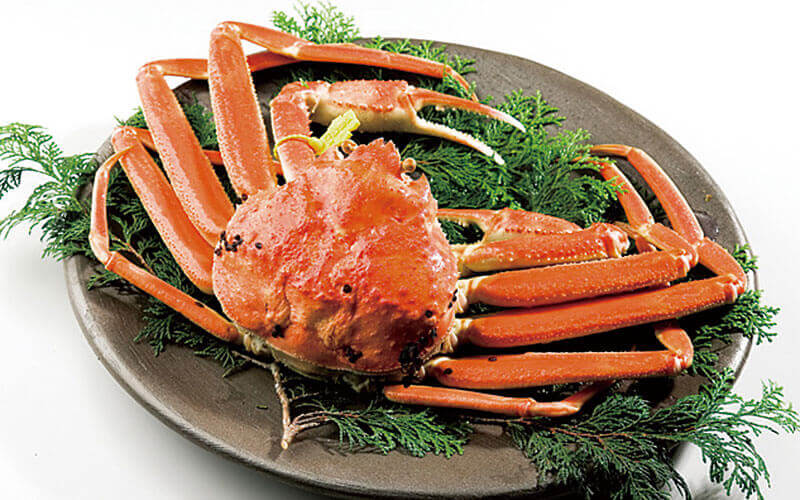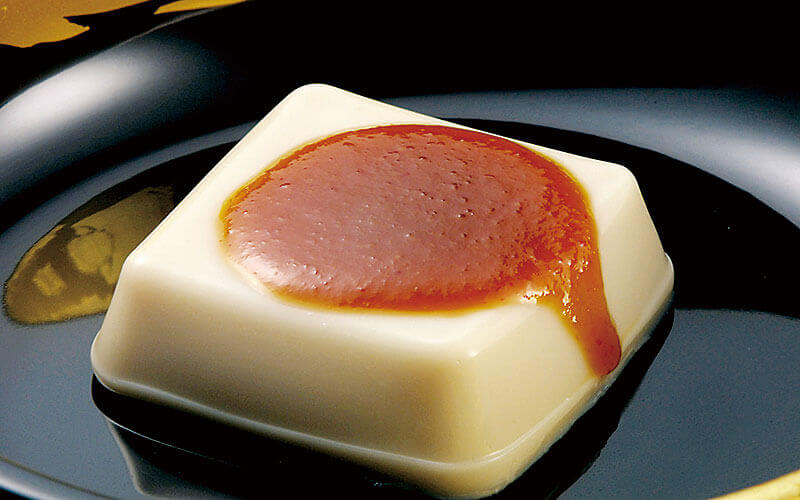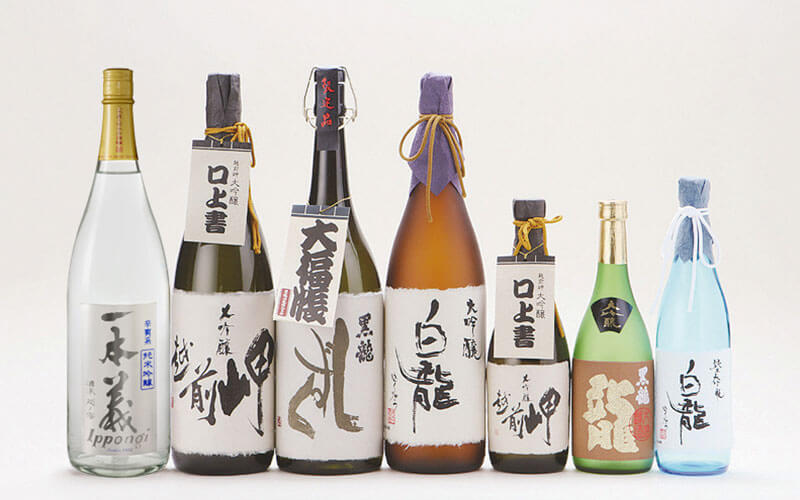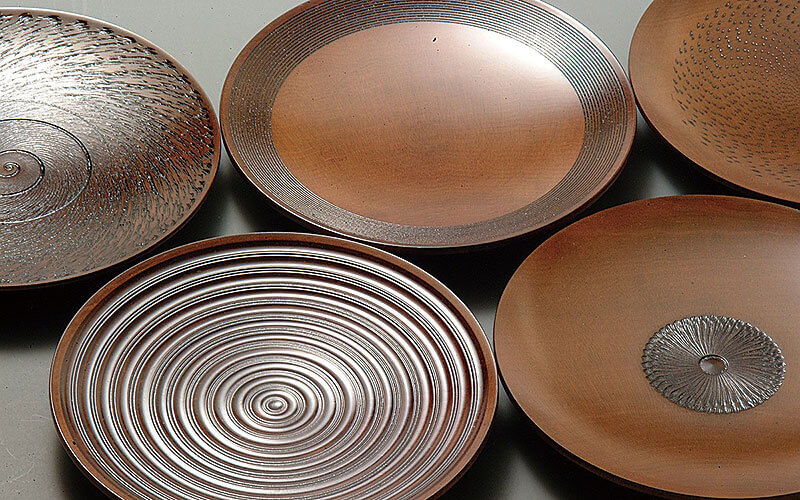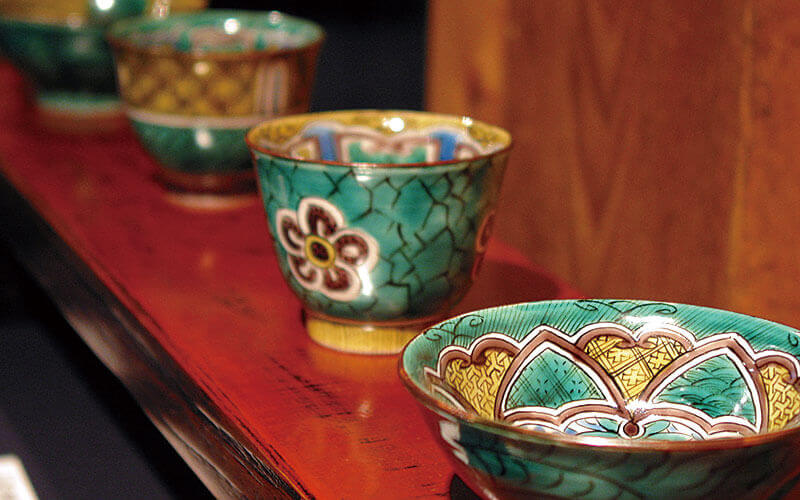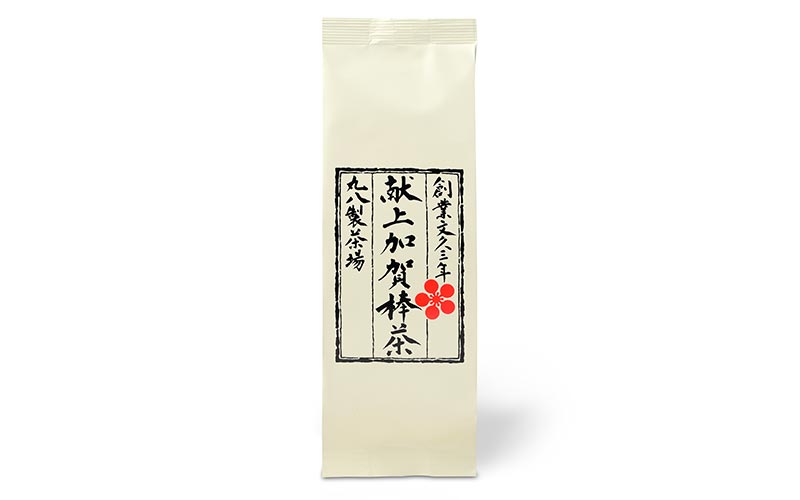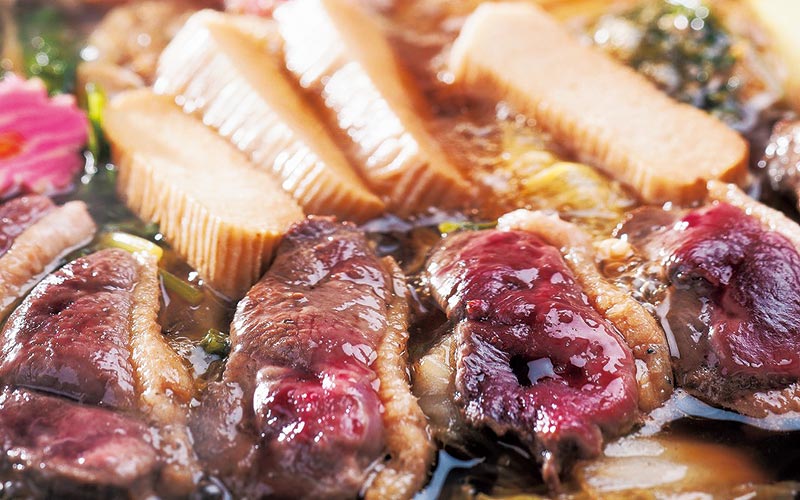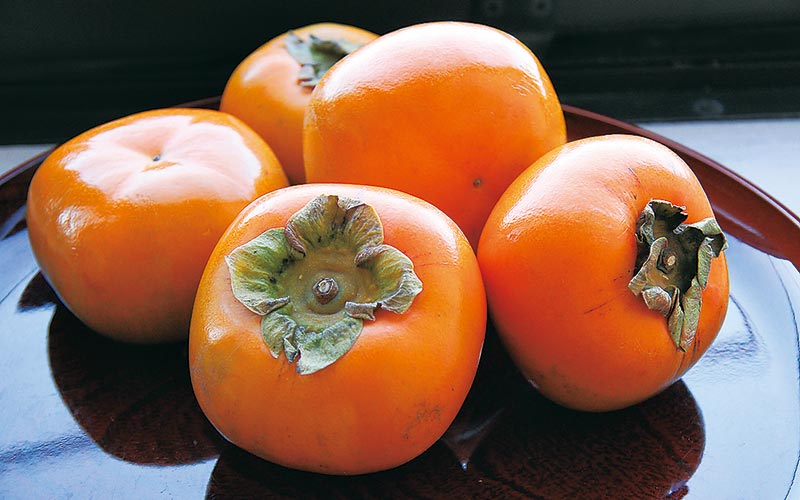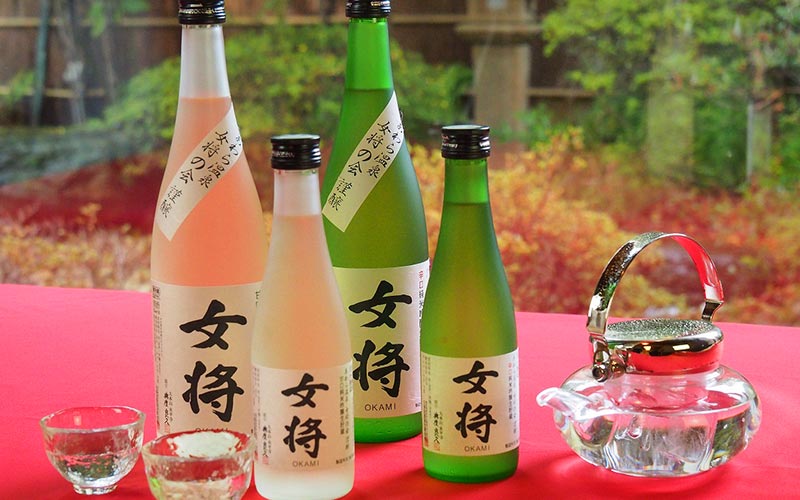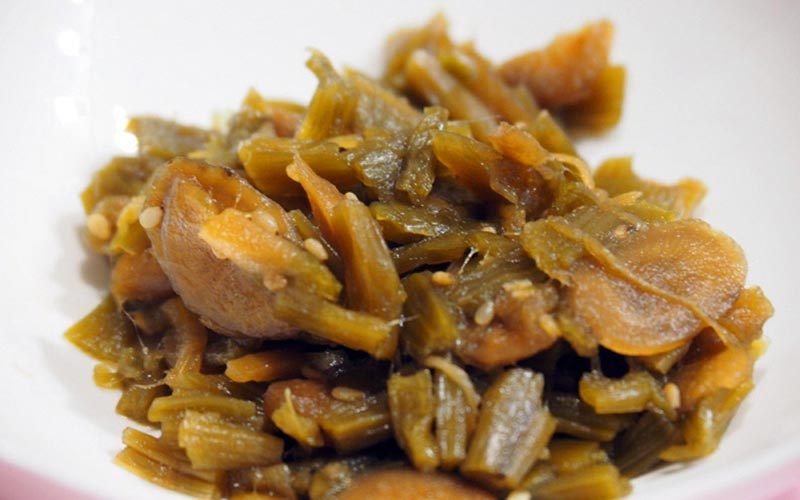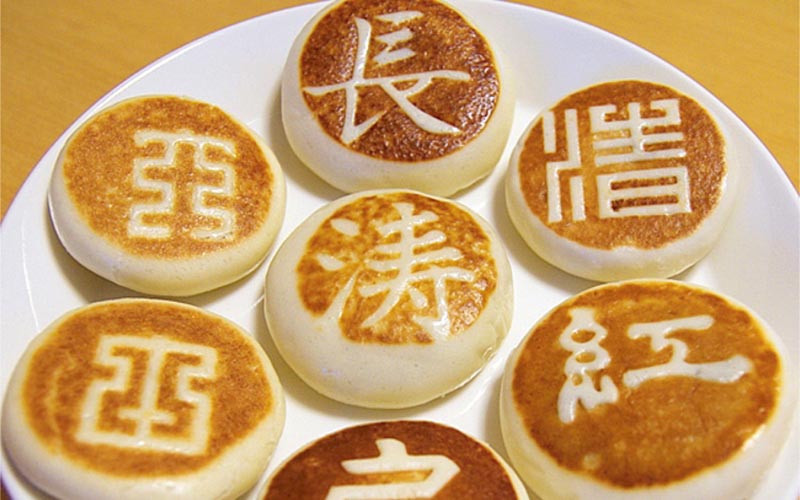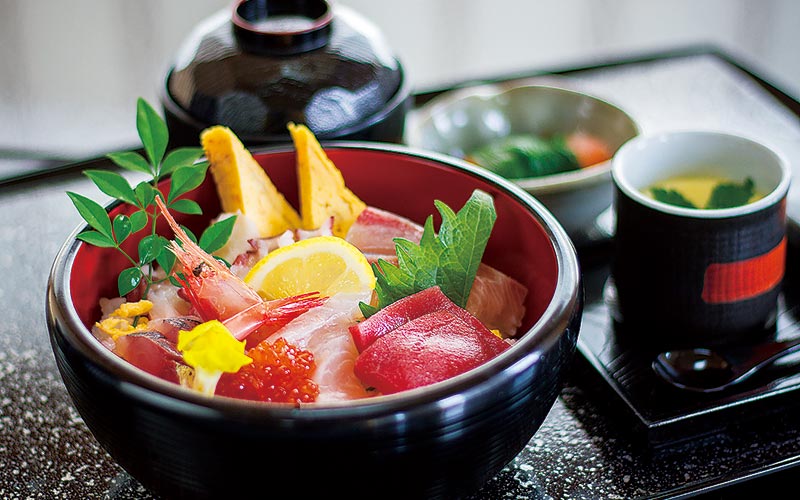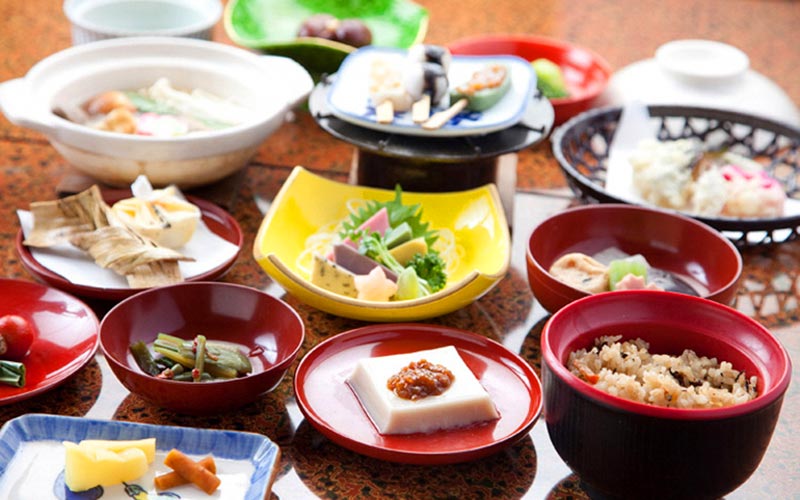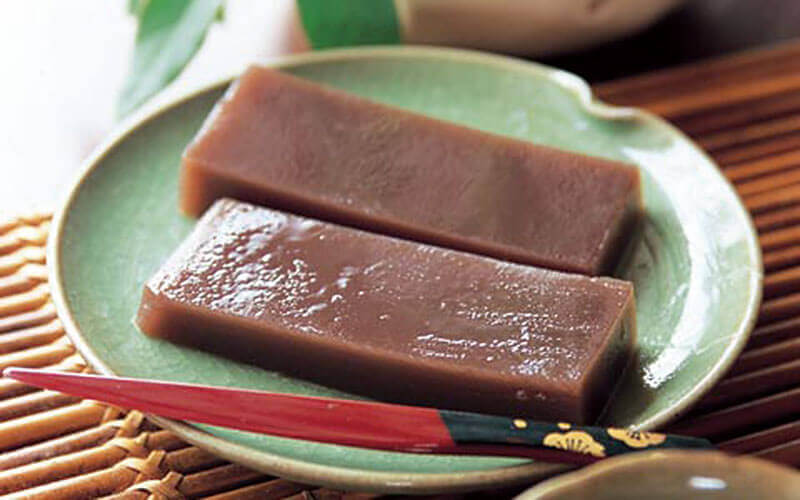Specialties of Echizen-Kaga
Koshi-no-Ruby Tomatoes
Awara City and Sakai City / June through November
Small tomatoes grown in parts of Fukui Prefecture with sandy soil, known for their fruity sweetness and high nutritious value. Koshi no Ruby Tomatoes are grown with such care and are so delicious that they are offered up to the imperial family, and they are in season from June through November.
Tomitsu Kintoki Sweet Potatoes
Awara City / Throughout the year
Premium brand-name sweet potatoes grown in the ruddy soil of the Tomitsu region of Awara City, and beloved nationwide. Their perfectly balanced moisture gives them a great sweetness and a wonderful texture.
Echizen Oroshi Soba Noodles: Echizen-Sakai Karami Soba Noodles, Eiheiji Soba Noodles, and Kachiyama Oroshi Soba Noodles
Awara City, Sakai City, Eiheiji Town, and Katsuyama City / Throughout the year (New-season soba: October through November)
Soba buckwheat noodles with grated daikon radish seems like a simple dish, yet it has a surprisingly complex flavor, and has recently drawn attention as part of a macrobiotic diet. The different variations you'll find in different regions of Fukui make it a great dish to try everywhere to compare them.
Kachiyama Bokkake
Katsuyama City / Throughout the year
A local favorite, made by pouring dashi soup with red kamaboko fish cake and mitsuba on top of rice, garnished with a bit of nori seaweed and wasabi. Popular at wedding parties and other celebrations in the area due to its auspicious nature.
Kachiyama Oyaki Grilled Sweet Buns
Katsuyama City / Throughout the year (Limited seasons at some shops)
Kachiyama Oyaki dumplings, sold by shops throughout the Katsuyama area, have more mugwort mixed in than ordinary oyaki dumplings, giving them a rich green color that goes nicely with the delicious browning from the grill on their surface.
Echizen Bamboo Dolls
Sakai City / Throughout the year
Fukui Prefecture is known for its prodigious snowfalls, as well as these traditional handicrafts. The harsh winters gave rise to high-quality long-jointed bamboo and moso bamboo that can handle the cold, and this bamboo has long been used to produce baskets, flower holders, and more.
Wakasa Beef
Awara City and Sakai City / Throughout the year
Wakasa Beef maintains unusually high quality standards: out of the five ranks of quality, only beef from the top two ranks earns the right to be sold as Wakasa Beef. Savor its melt-in-your-mouth tenderness and exceptional flavor.
- Awara City: Restaurants and other places in the city
- Sakai City: Miyoshiro, Tsuruya, and other places
Miyoshiro
Tsuruya
Snow Crab: Echizen Gani Crab and Kano Gani Crab
Awara City, Sakai City, and Kaga City / November through March
Long considered one of Japan's favorite varieties of crab for its rich, sweet flavor. Mikuni and Hashitate Fishing Ports pull in some of Japan's greatest hauls of snow crab — during crab season, from early November through March, many people visit the Echizen-Kaga area from all over Japan simply to enjoy snow crab.
- Awara City: Ryokan inns, restaurants, and other places in the city
- Sakai City: Mikuni-Port area and other places
Eiheiji Sesame Tofu
Eiheiji Town / Throughout the year
An iconic example of the Shojin-ryori Buddhist Cuisine tradition handed down from generation to generation by the monks training at Eiheiji Temple. Taking the time and effort to prepare it properly gives it a smooth texture and a rich flavor, making it a popular souvenir.
Local Sake
Entire Echizen-Kaga Area / Throughout the year
The Echizen-Kaga Area is known for its bitterly cold winters and pure water from Mt. Hakusan that helps grow delicious rice, enabling the production of truly outstanding sake known nationwide.
Sauce Katsu-Don Pork Cutlet Bowl
Awara City, Sakai City, Eiheiji Town, and Katsuyama City / Throughout the year
In Fukui, the most popular way to eat pork cutlets is in a Sauce Katsu-Don Pork Cutlet Bowl: freshly fried pork cutlets are flavored with a Worcestershire sauce-based sauce and served on top of hot rice, for this Fukui favorite.
- Awara City: Restaurants in the city
- Sakai City: Ippitsu Keijou Chaya, and other places
- Eiheiji Town: Michi-no-Eki Zen no Sato
- Katsuyama City: Restaurants in the city
Yamanaka Lacquerware
Kaga City / Throughout the year
These traditional handicrafts boast four centuries of history. Yamanaka lacquerware is perhaps best known for outstanding turned wooden bowls, given a lacquer finish that makes the most of the wood grain. The Yamanaka area's exceptional wood-turning techniques include producing thin-walled items and decorative carving, and the area produces some of Japan's largest quantities of lacquerware.
Kutaniyaki Ceramics
Kaga City / Throughout the year
Kutaniyaki Ceramics have some 360 years of history, and the bold designs and bright colors of these traditional handicrafts have drawn praise from throughout Japan and around the world.
Kaga Bocha Roasted Tea
Kaga City / Throughout the year
A staple of the Kaga and Kanazawa areas, this roasted tea is made primarily not from tea leaves, but rather their stems. This gives it a unique aroma not found in hoji-cha roasted teas made only from leaves, which pairs perfectly with everything from meals to sweets.
Kaga Crab Cuisine
Kaga City / Throughout the year
Female snow crabs, known locally as kobako gani, are brought ashore at Hashitate Fishing Port in Kaga City, and these valuable crabs are served in a variety of small dishes made with seasonal vegetables and fish, alongside miso soup, Kaga Bocha roasted tea, dessert, and coffee, for a beloved local specialty.
- Bantei
- Kuimon’ya Furusato
- Casa Fortuna
- Kappo Kaga
- Hotel Arrowle Chikusui
Kaga Parfaits
Kaga City / Throughout the year
Five-layer parfaits made with local ingredients from Kaga City. Ingredients like soft-boiled egg and kabocha pumpkin-flavored ice cream are topped with Kaga Kutani vegetables, for a truly uniquely Kaga experience at each shop that serves their Kaga Parfait.
- Machi Café
- Kaga Fruit Land
- Kuimon’ya Furusato
- Kasanomisaki
- Bengaraya
Wild Duck Cuisine
Kaga City / Winter (Please inquire for details.)
Kaga City is famous for cuisine made with wild duck, caught using traditional sakaami thrown nets. Duck hunting season lasts for three months each winter, and only about 200 ducks are caught each year, making this pleasantly springy yet not at all gamey duck meat a delicious rarity.
Awara Pears
Awara City / August through September
They grow Kosui, Hosui, Nijisseiki and other pears in the hilly areas of AwaraCity. Each year, many families are visiting pear orchards which offer pear-picking.
Echizen Kaki Persimmons
Awara City / October through November
Persimmons growing on the hills of Awara City are characterized by their square shape and lack of seeds. Their astringent taste is carefully removed over an adequate time, leaving a taste of crunchy texture inherent to persimmon. Their harvest time is from October to early November.
Echizen Onigawara Ogre Tiles
Awara City / Throughout the year
Onigawara is a type of tile with face of Japanese ogre, which is installed as a protective charm mostly at the edges of a roof. These tiles are made of ""Echizengawara (Echizen tile)"" which is produced in Fukui. At “Machinaka Onigawara Kobo (Onigawara workshop in the town)"" you can purchase figurines of Onigawara (ogre tile) produced by Masayoshi Nishigori who is the only craftsman specialized in Onigawara in Fukui Prefecture. We recommend them as gifts or lucky charms to be placed in your room.
- Machinaka Onigawara Kobo
Okami No Sake
Awara City / Throughout the year (New sake season: December)
All 13 landladies of inns in AwaraOnsen have acquired qualifications for kikisake-shi (sake sommelier).This is a sake produced with great care and effort by those landladies who worked consistently on it from making of sake rice to preparation stage.Only people staying at the designated inns in AwaraOnsen can taste this limited item. In addition, ""Okami Cocktail"", of which recipeswere invented at different inns based on ""Okami No Sake"",are offered at some inns.
Momi-Wakame Dried Seaweed
Sakai City / Late April through early June
It is a wakame seaweed collected by ama (Japanese traditional female diving collectors), dried with salty wind and sun. There are two kinds in its form, either plate or powder. Since the wakame is full of umami (savory taste), it is good to sprinkle its kneaded powder over a bowl of freshly cooked rice, or put it in a cup of osuimono (Japanese soup).
Echizen White-Stalk Burdock
Sakai City / April through May
This is a tsukudani (preserved food boiled in soy) made by carefully salting white-stalk gobo (burdock) , all of which parts such as roots, leaves and stems are edible. The scent and flavor of the gobo spread in your mouth, and once you started eating them, you cannot stop. They go well with bowl of rice, or cup of sake.
Hana Rakkyo Pickled Shallots
Sakai City / Throughout the year
This is a special vegetable from the town of Mikuni, grown in three years. It is characterized by its tiny size, firmness, fibrous substances, and crispiness. You can enjoy tasting it in various ways and forms such as sweetened vinegar pickles, pickles with pepper, and wine pickles.
Saka-Manju Sake-Infused Red Bean Buns
Sakai City / Throughout the year
This manju (Japanese sweet bun) is a local confectionery of the town of Mikuni. Method of its making was learned from the sailors of Kitamaebune ships and has been passed on to today. The flavor of sweet and sour sake on its skin harmonizes with the tasty sweet bean paste. The most notable feature is that different stamp is pressed on the surface of the manju at each shop who made it.
Abura-Age (Fried Tofu)
Sakai City / Throughout the year
Fukui Prefecture consumes largest amount of abura-age (fried tofu) in Japan. In particular, abura-age produced in Sakai City boasts immovable popularity. Crispy outside and juicy soft inside. Recommendation is to eat it with daikon-oroshi (grated Japanese radish).
Kaisendon (Seafood-Topped Rice Bowls)
Sakai City and Kaga City / Throughout the year
Rich seafood is one of the most favored features of the Echizen Kaga area. With fresh seafood piled up over its rice, Kaisendon is particularly popular. Let's enjoy its exciting taste.
- Sakai City: Tojinbo Cliffs area, Mikuni-Minato area, and other places
Shojin-ryori Buddhist Cuisine
Eiheiji Town / Throughout the year
Shojin Ryori of Daihonzan Eiheiji temple is a type of cuisine that has been handed down among the monks of the temple. There are restaurants offering Shojin Ryori lining up Eiheiji Monzen-dori Street. Made mainly of tofu and vegetables, they are healthy and recommended for vegetarians as well.
Melons
Awara City and Sakai City / June through August
More than 10 varieties of melon are grown in Awara City, with both orange and green flesh, in various colors, shapes, and flavors. Enjoy their smooth, tender texture, rich aroma, and wonderful sweetness.
Mizuyokan Red Bean Jelly
Entire Echizen-Kaga Area / Winter
A refreshing Japanese dessert made of smooth sweet red bean paste, sugar, and agar. Though it’s generally eaten in summer nationwide, in the Echizen-Kaga area, it’s more commonly eaten in winter.
